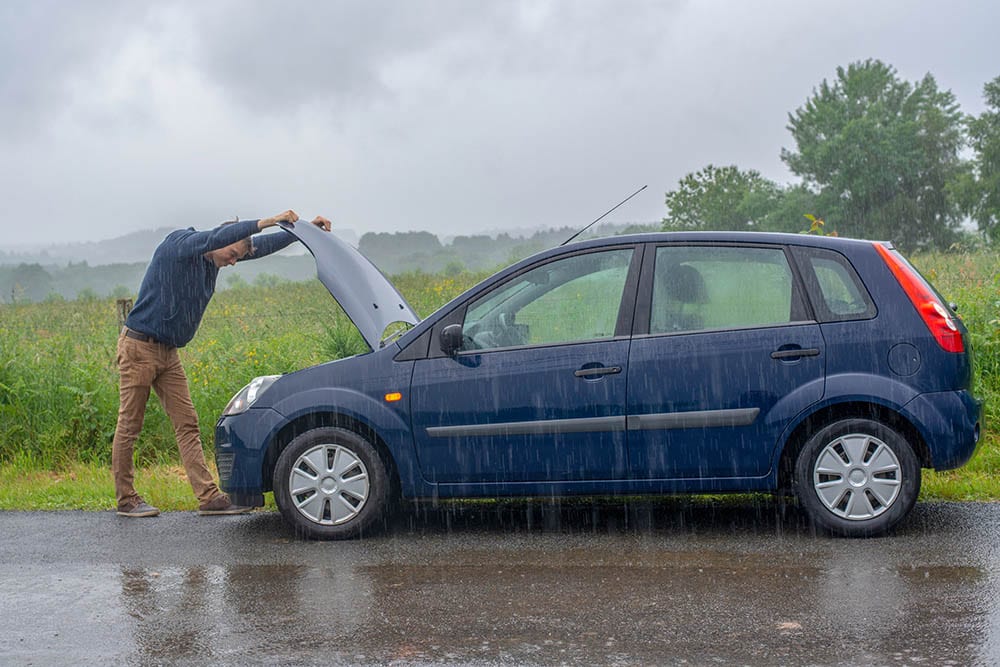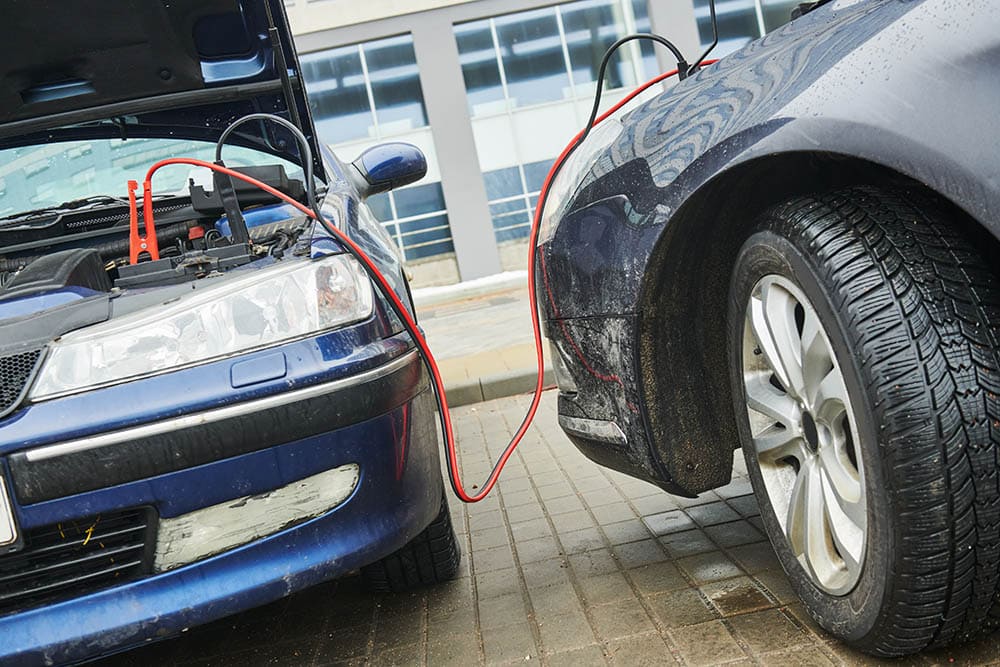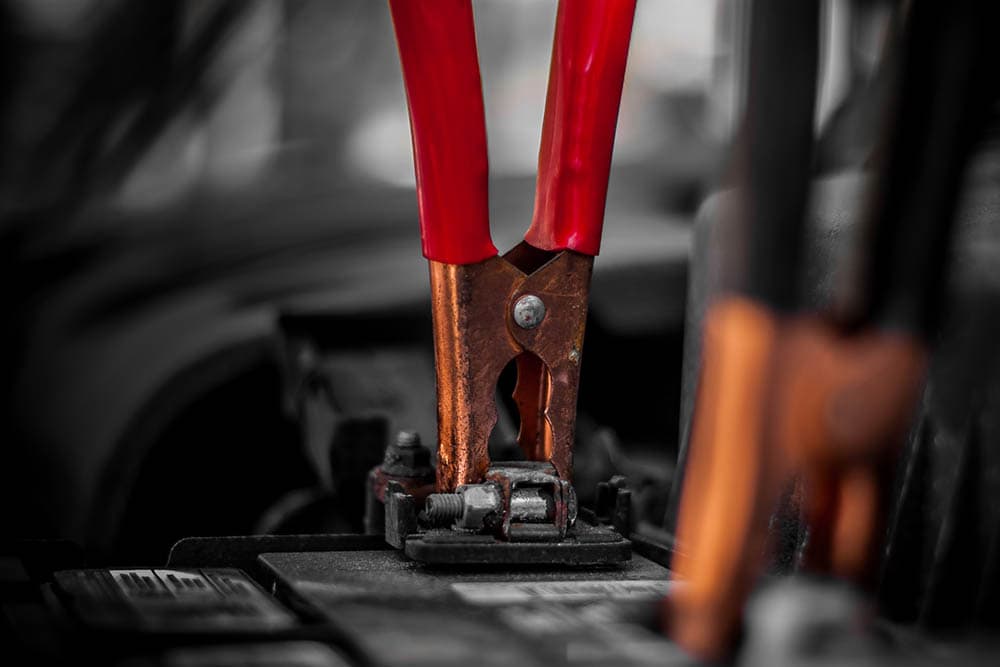Can You Jump Start a Car in the Rain? Is It Dangerous?
-
Kristin Hitchcock
- Last updated:

Technically, if you are jump-starting a car correctly, then rain or excess moisture in the air shouldn’t make it any more dangerous. It is no different than doing it on a dry day. Instead of worrying about the rain, it is much more important to pay attention to the order the cables go on.
You’re much more likely to injure yourself or your car because of improperly jumping it than the rain is to damage it. Connecting the cables in the correct order is far more important than avoiding rain, in other words.
When you are jumping a car in the rain, you simply need to ensure that the rain isn’t being distracting. Focus on the task at hand, even if you’re getting wet doing it. The only reason rain might make the process more dangerous is that it may make you rush, which can potentially result in a mistake.
Therefore, human error caused by rain is more likely to cause problems than the rain itself.
Below, we’ve carefully listed all the steps for jumpstarting your car in the rain, which should help you follow through the process correctly.
How to Jump-Start a Car in the Rain
Jumpstarting a car is a pretty straightforward concept. However, it is easy to get the steps in the wrong order, which can be potentially dangerous. There is a lot of electricity running through car batteries, which can lead to injury if you handle them improperly. Therefore, we recommend working through these steps slowly and reading through them completely before you begin.
- Turn off both cars. Before you do anything at all, both cars need to be off. Otherwise, you may get electrocuted when messing with the battery. Never mess with a battery when the car is on.
- Handle the red clamps. Now that the batteries are off, place one of the red clamps on the positive post of the dead battery. The other red clamps go on the positive post of the good battery.
- Handle the first black clamp. Now, put the black clamp on the negative post of the good battery. Do not connect the second black clamp.
- The second black clamp should be attached to a metallic part of the engine block somewhere in the dead car. Do not place it on a battery. This is where many people mess up and can potentially ruin their batteries.
- Start the car with the good battery. Then, start the car with the bad battery. It should turn over at this point. However, if it doesn’t, then it likely isn’t the battery causing the issue. Once the car is on, leave it running. Don’t turn it off, or you’ll be unable to start it back up again.
- Disconnect the cables. Go in the reverse order that you put them on. In other words, you want to do the black grounding cable first, and then the black cable connected to the good battery. Next, do the red cable connected to the good battery and then the red cable connected to the bad battery.
And that’s it! If you follow these steps correctly, then you likely won’t need to worry about the rain. Just don’t let it get you in a rush, which can cause you to make mistakes.

Can You Jump a Car if the Battery is Wet?
Of course, if you’re jumpstarting the car in the rain, then the battery itself may end up wet. We do recommend trying to protect the battery as best you can. You don’t necessarily want it to get wet, though it shouldn’t cause any problems.
If you can, avoid this problem altogether by having someone hold an umbrella over the battery while you work.
With that said, it is completely possible and safe to jumpstart with a wet battery. There is not enough voltage within the average car battery to cause any problems, even if the battery is wet. However, getting a connection may be challenging if there is a lot of water.
Still, this isn’t particularly dangerous. You just won’t be able to jumpstart the battery at all. Luckily, an easy way to fix this is by wiping off the battery—safely, of course.
For the most part, everything in the engine is built to withstand a little rain. However, that doesn’t mean that you should just let it rain in your engine bay—it is best to cover up the engine when possible.

It is Okay if My Jumper Cables are Wet?
When you’re jumpstarting a car in the rain, your jumper cables are probably going to get wet. Luckily, this is completely okay! You can jump off your car with wet jumper cables. The moisture should not affect their usage.
Most of the jumper cable should be coated in rubber, which isn’t going to be bothered by the rain in the least. This is one reason that most jumper cables are largely rubber—it’s very protective against the elements.
With that said, we do recommend drying off the jumper cables before storage. If you store them wet, the exposed metal may rust and make them unusable. The only area you need to be cautious with is the clamps, though, since they are the only part that is exposed.
Unless you want to purchase a new set of jumper cables, we recommend storing them in a dry place and ensuring that the actual cables are dry before you put them up.
Conclusion
We understand that it’s pretty normal to be a bit squeamish about messing with electricity during a rainstorm. However, there is nothing inherently dangerous about jumpstarting a car in the rain. As long as you do it correctly, there isn’t a chance of anyone getting electrocuted. Plus, the batteries are perfectly capable of withstanding some rain, so you don’t have to worry about them.
We only caution against rushing in the rain, which can make you make mistakes. Instead, take your time and be sure to do it correctly.
Featured Image Credit: patat, Shutterstock
Contents
